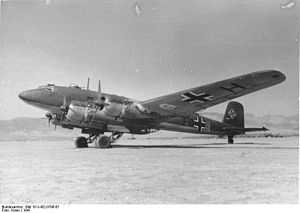Operation Fritham
| Operation Fritham | |||||||
|---|---|---|---|---|---|---|---|
| Part of World War II | |||||||
 SS Selis and SS Isbjørn were sunk by four Focke-Wulf Fw 200 Condors of the Luftwaffe. | |||||||
| |||||||
| Belligerents | |||||||
|
|
| ||||||
| Commanders and leaders | |||||||
| Einar Sverdrup † | |||||||
| Strength | |||||||
|
82 soldiers SS Selis (transport ship) SS Isbjørn (transport ship) | 4 Focke-Wulf Fw 200 Condors | ||||||
| Casualties and losses | |||||||
|
12 killed 15 wounded (one died later) | |||||||
| ||||||
Operation Fritham was a World War II Norwegian military operation, based from British soil, that had the goal of securing the rich coal mines on the island of Spitsbergen (a part of Svalbard) and denying their use to Nazi Germany.[1]
The mission
On 30 April 1942, 82 men from the Norwegian Brigade in Scotland sailed aboard the steamships Selis and Isbjørn from Greenock heading for Svalbard. On 14 May, the two ships were sunk by Luftwaffe Focke-Wulf Fw 200 Condor long-range patrol bombers. Twelve men were killed and 15 wounded.
The operation's commander was Einar Sverdrup, who died on the mission. Sverdrup had been the CEO of the Store Norske Spitsbergen Kulkompani, a Norwegian coal mining company based in Svalbard.[2]
Aftermath of the air attack
The surviving soldiers managed to get to Barentsburg. The survivors were on their own until May, when they were spotted by an Allied aircraft, following which they were supplied by air-drop. On 2 July the force were re-supplied by sea, an operation code-named Gearbox. They survived isolated on Spitsbergen until reinforcements arrived. Air raids continued against the Fritham force during this period and therefore Operation Gearbox equipped them with anti aircraft guns.